Sharlyn J. Lauby's Blog, page 38
June 1, 2023
Putting Diversity Equity and Inclusion Talk into Action
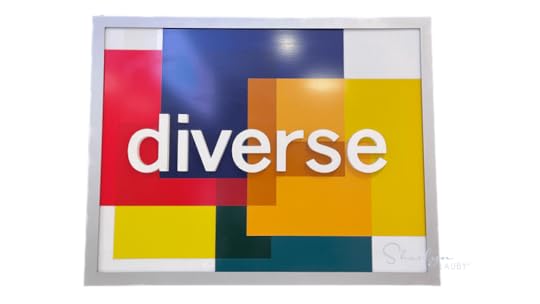
Estimated reading time: 3 minutes
One of the conversations that I continue to hear is that organizations are spending a lot of time talking about the importance of diversity, equity, and inclusion (DE&I) but not enough time doing something about it. So I wanted to share a great resource I just discovered. Oh, and it’s FREE.
I recently read an interview on HR Brew with Queer Eye’s Karamo Brown, who has developed an online DE&I course on the EdApp platform. Before I tell you about the course itself, let me share a little information about EdApp.
EdApp is a mobile learning platform. You can sign up for free as either a learner or a learning administrator. As a learning administrator, you can send a learning program to participants, so they don’t have to search around for content. With the EdApp platform, you can view and participate in learning via desktop or mobile device. I found it very easy to sign up, find the program, and participate.
Now, about the content. Karamo’s Diversity, Equity and Inclusion Training Sessions is a series of eight microlearnings on topics like defining DE&I, unconscious bias, and psychological safety. Personally, I thought the lessons on microaggressions and standing up for yourself and your coworkers were very interesting and used realistic examples that people could relate to.
Because the sessions are short, they get right to the point. Karamo used personal stories to introduce the topic. And at the end of each lesson there are some activities to reinforce the material.
I could see this program being used in a variety of ways.
You could use it as a stand-alone program. Participants can complete it at their own pace. It could also be a great first activity – like pre-work – before a more in-depth or lengthier program. Maybe the individual lessons could be reviewed on their own and then participants would come together to discuss, like a book club format.The point being – it’s a good program and you have some flexibility on how to use it in DE&I learning. So if your organization is saying things like:
“We value DE&I, but we need to focus on the bottom-line this year.” Well, this program is FREE.
“We feel strongly about DE&I, but we can’t afford for employees to be away from their desks for a training program.” This program consists of eight microlearnings that take roughly 10-15 minutes each.
“The budget is tight this year, we don’t have the funds for a DE&I consultant.” In addition to his work on Queer Eye, Karamo Brown is the author of several books, and has partnered with corporations and government to educate others on topics related to mental health and the LGBTQ community. In 2018, he was the recipient of the Human Rights Campaign Visibility Award.
So, if your company has said “If you can find a free DE&I learning program, from a reputable source, that employees would enjoy … and not keep them away from work for too long, then go for it.” Now you have the answer. And I believe that a program like this one could open the door for future DE&I learning programs. Which is exactly what organizations need – some action to go with all that talk.
Image captured by Sharlyn Lauby while exploring the streets of Atlanta, GA
The post Putting Diversity Equity and Inclusion Talk into Action appeared first on hr bartender.
May 30, 2023
Bookmark This! Show Your Work Edition – HR Bartender
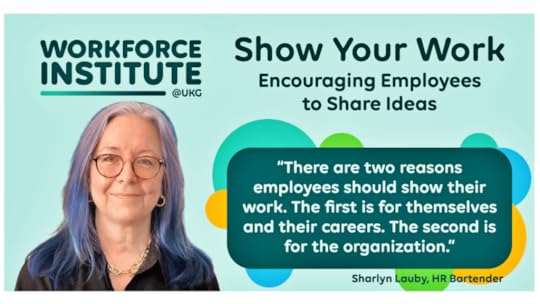
Estimated reading time: 3 minutes
This might be an unpopular statement, but I like math. I love puzzles and word games. I play the Wordle, Quordle, Octordle, and Sedecordle every day. LOL!
The reason I’m bringing up my love of math and puzzles is because often when you do these activities, you have to “show your work”. It’s not just coming up with the right answer. It’s about also using the right process. The idea of showing your work is important. Because you might get to a right answer the wrong way. Or use the right reasoning but not reach the right answer. So, showing your work can be very helpful in problem solving.
If you translate the “show your work” concept to the business world, both managers and employees have opportunities to show their work. Managers can share with employees a decision as well as how the company reached that decision. Employees can show the organization how they’ve streamlined a process or procedure to save time or improve quality.
I recently wrote a couple of articles for The Workforce Institute about how managers and employees can show their work. I hope you’ll check them out.
Show Your Work: How Managers Can Gain Greater Buy-in from Employees
Managers who show their work will find their job gets easier. Employees know they’re getting good information to help them in their jobs. The team will excel, which lifts the entire organization.
The key to showing your work well is almost to move it from “that thing you do” to something you just do all the time. Like a regular habit. Maybe it starts with asking the question, “When did I show my work today?” Then it won’t be too long before managers are showing their work all the time.
Show Your Work: Encouraging Employees to Share Ideas
Employees want to know that their work makes a difference. They want to know that they have a future with the organization. Creating an environment where employees can openly show their work allows that to happen.
Employees who regularly show their work and have a positive impact on the organization are probably the organization’s high-potential/high-performing employees. If they’re not already considered that, then the organization might want to ask themselves why not.
Right now, organizations are looking for ways to be more effective and efficient. Creating an environment where employees feel comfortable showing their work can be very beneficial. It’s equally beneficial for the employee because they’re gaining knowledge and experience.
Now is a perfect time to think about how the organization can bring showing your work into the things they do every day – in one-on-one meetings, shift briefings, department meetings, and even client conversations. Because the more we show our work, the better we get at solving problems and creating solutions.
The post Bookmark This! Show Your Work Edition – HR Bartender appeared first on hr bartender.
May 25, 2023
5 Qualities Found in Excellent Mentors – HR Bartender

Estimated reading time: 3 minutes
A few weeks ago, I published an article on “How to Find a Mentor”. It’s not always simple so I hope you’ll check it out.
I believe that finding the right person to be a mentor is key in the mentoring relationship. The other piece is being a good mentor. Honestly, I think a lot of people get asked to be someone’s mentor and they’re so flattered by the request that they say “yes!” without thinking through what’s involved (sound familiar anyone?).
I’ve put together a list of things that a good mentor should have. Use this list two ways. First, if you’re considering becoming someone’s mentor, ask yourself “Can I do these things? And do them well?”. And if you’re asking someone to be a mentor, ask the question “Can they do these things?” And do you believe they will?
Time management. Being a mentor means giving someone your time. You know your schedule. Do you have the time to do this? Because if you don’t, it’s not fair to say yes and then continuously reschedule or simply not show up. Knowledge and skills. You’re being asked to be a mentor for a reason. Maybe it’s because of your expertise in a particular area. Or maybe it’s based on your work experience. Mentors should be comfortable sharing their knowledge and skills. Communication and listening. Being a mentor is about listening and sharing. That could be in-person or online. It might also take place verbally as well as in writing. It also means responding with both empathy and enthusiasm. Honesty and trust. Excellent mentors are people who can be trusted. Not only with the information the mentee shares with them but also trusted to give good feedback. One of the reasons that someone might be looking for a mentor is because they need someone who will provide direct, honest feedback. Open and non-judgmental. Being a mentor isn’t about “judging” the mentee. It’s about listening and offering feedback. It’s okay to not agree on everything. If you do find that you’re disagreeing more than your agreeing, you might need to revisit the purpose of the relationship. But mentoring is about creating an open dialogue.Mentoring is a great activity. Not only does it feel great to share your experience and knowledge with others, you can also learn a lot along the way. But that will only happen if the mentoring relationship is built on the right foundation.
Mentors come and go throughout our personal and professional lives. If you have to pass on an opportunity, that’s fine. It’s better to say “now is not a good time” or “I can if we redefine expectations…” than to say “yes” and not get the full benefit – for you or the mentee.
According to the site MentorCliq, 92% of all U.S. Fortune 500 companies have mentoring programs and 100% of the top 50 U.S. Fortune 500 companies. Mentoring is an incredibly popular activity because it works. That’s why it’s worth the time to learn how to do it well.
Image captured by Sharlyn Lauby while exploring the streets of Seattle, WA
The post 5 Qualities Found in Excellent Mentors – HR Bartender appeared first on hr bartender.
May 23, 2023
Everything HR Needs to Know About Deepfake Technology

Estimated reading time: 5 minutes
Just in case you missed it, the internet went wild a few weeks ago when a picture of Pope Francis wearing a white puffer jacket went viral. People were sharing the photo with comments about how trendy the 86-year-old pontiff looked. The problem was … the photo was a fake.
We can all look back on that incident now and say to ourselves, “Oh yeah, I could tell it was fake. I wanted to just get in on the fun.” And you may or may not think that’s okay. However, it does raise questions about deepfake technologies and their potential impact on the business world. After all, we use employee images on ID badges, security access, and more.
To help us understand deepfake technologies and how they might impact business, I spoke with Mark Brady, VP of emerging product at AU10TIX, a global technology leader in identity verification and management solutions. AU10TIX was recently named best identity-as-a-service platform in the 7th Annual FinTech Breakthrough Awards.
Mark, thanks so much for being here. Let’s start with a definition. What is deepfake technology?

[Brady] Deepfakes are counterfeit, manipulated images or audio of a person, either living or dead. They are created using powerful deep learning technologies and can be incredibly convincing. Over time, this technology has evolved from a crude set of professional tools to off-the-shelf packages, enabling fraudsters to produce convincing images even in real-time streaming videos. Deepfake backgrounds are also becoming increasingly realistic – movements and gestures are uncannily realistic, and voices can be accurately morphed.
What are the benefits and risks of deepfake technology?
[Brady] Typically when deepfake technology is mentioned, it’s in a negative light. Although there are numerous risks associated with the technology, there are also benefits.
Benefits:
Education: The technology can be used in educational settings to create simulations and training modules that simulate real-life scenarios.Research: Deepfake technology can be used in research to better understand human behavior, language, and facial expressions.Accessibility: We can also use deepfakes to assist the disabled by creating realistic sign language videos, generating speech for those who are unable to speak, etc.Risks:
Misinformation: Deepfake technology can be used to create fake news or misleading information, which can have serious consequences for individuals and society.Privacy: The technology can be utilized to violate people’s privacy by creating fake videos or images that depict them in compromising or embarrassing situations.Fraud: Fraud can be committed through the creation of deceptive video or audio recordings.As a human resources professional, I could see one of the risks in deepfake technology being the possibility of having employee IDs/credentials duplicated. How prevalent is this issue?
[Brady] With workplaces continuing to allow ‘work from home’ flexibility, solutions that enable remote onboarding and enhanced security when accessing company internet protocol (IP) are crucial. These issues are still top of mind as well, for example: Microsoft surveyed 3,000 enterprises and found that 82% of people want a better way to address these concerns.
Many organizations see digital IDs and verifiable credentials (VC) as potential solutions for this issue, but data retention responsibilities have delayed mass adoption.
Is there anything that organizations can do to reduce the risk of deepfake identity fraud? How does a verifiable credential work?
[Brady] At AU10TIX, we recently collaborated with Microsoft on a groundbreaking solution called Reusable ID, which offers a promising approach for HR departments. It introduces a reusable, unalterable digital credential that is securely stored on the user’s device, providing a decentralized and tamper-proof solution. This local storage approach aims to minimize the risk of data breaches and unauthorized access, as the credentials are not stored on a central server.
One notable advantage of AU10TIX Reusable ID is its utilization of advanced artificial intelligence (AI)-powered authentication and verification technology. This technology plays a crucial role in ensuring the authenticity of the user’s identity, making it more challenging for fraudsters to employ deepfake techniques to verify fake identities.
Last question. And I want to switch perspectives. So far, we’ve been talking about what organizations can do to protect themselves. For employees who might be reluctant to participate in this type of program, what can organizations say to encourage user adoption?
[Brady] It is common for employees to distrust new technology. Understandably, the thought of a machine being able to recognize you can be nerve-wracking. It’s vital that organizations reassure their employees that the technology will be used ethically, and their privacy will be safeguarded. It’s also a good idea to host training sessions so that everyone can become more familiar with the process.

To encourage employee adoption, organizations can emphasize such benefits as how the technology can help streamline and simplify various activities, like onboarding, accessing company resources, and securing remote work. They could also focus on how the technology helps protect employees’ personal information and prevents identity theft and other forms of fraud.
I want to thank Mark for sharing his knowledge and expertise with us. If you want to learn more about identity verification technology, AU10TIX has a blog you might want to check out.
The technology breakthroughs we’re seeing right now with artificial intelligence, chatbots, and the metaverse are very exciting. The potential is tremendous. But we need to balance our enthusiasm by understanding the risk. Looking at new developments – like deepfake technology – from all perspectives gives organizations the ability to make good decisions that will benefit the business.
Image captured by Sharlyn Lauby while exploring the streets of Las Vegas, NV
The post Everything HR Needs to Know About Deepfake Technology appeared first on hr bartender.
May 21, 2023
Teach Employees How to Unlearn
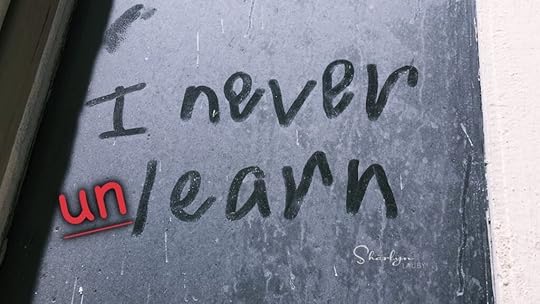
Estimated reading time: 3 minutes
I’ve been seeing a few articles recently about “unlearning”. There was one from Lifehacker titled “What You Should ‘Unlearn’ to Actually Succeed at Work” and the another from Harvard Business Review that was focused on “Redesigning How We Work”.
While the HBR article wasn’t exclusively focused on unlearning, the conversation about hybrid work reminded me that organizations shouldn’t expect employees to simply unlearn everything they’ve been doing for the past three years with a snap of the fingers. We’ve developed new habits and ways of getting things done. Employees should be given time to unlearn and relearn.
Then it occurred to me that organizations really don’t spend much time teaching unlearning. And maybe it’s time we start. The first thing that came to mind when I think of unlearning is using something like Lewin’s Change Model (unfreeze – change – refreeze). You could even call it unlearn – practice – relearn.
During the UNLEARN phase, employees realize they need to change their behavior. This could happen a couple of ways. First, the organization decides they’re going to implement a new policy, procedure, or process. Or second, the employee realizes that something they currently do doesn’t work anymore. Either way, the employee needs to learn a new way of doing something.
Example: Let’s say we manage a restaurant. Just hired a new server. The server has experience at several local restaurants. But they need to learn our restaurant’s processes, policies, and procedures. The new server needs to unlearn the way they did things at their former employer and relearn our system, while still understanding the concepts of restaurant service.
In the PRACTICE phase, the employee receives education and training on the new activity. They’re given an opportunity to practice. This could take place in a formal training environment (like classroom training) or informally in on-the-job training. Employees are still given time to adjust to the new way. It’s possible they might make mistakes.
Using our new server example, it’s possible that they might mess up how they key in a customer’s order because their former employer’s system was different. Or they might ask some questions about “Well, what do I do if a customer does ABC? Because at my last job, we did this.” Honestly, this could be very helpful. Asking questions means the employee is thinking about unlearning and what behaviors they should keep using.
Finally, the RELEARNING phase allows the employee to move forward with the new behavior. It’s important that managers provide support, coaching, and feedback to let the employee know how they’re doing. If the employee will start to be held accountable for “knowing” the new behavior, the manager needs to tell them.
Our new server is doing a great job and hasn’t had any mistakes lately. While we cannot expect everything to be perfect, both the manager and the new server feel comfortable that performance expectations have been communicated and trained. Moving forward, the server will be expected to follow the company’s performance standard.
Organizations might be very tempted to tell employees “Effective tomorrow, here’s the new procedure.” and not give anyone a chance to unlearn the old procedure. Not only does unlearning create buy-in for the change but it gives employees a chance to practice, which can improve their overall performance. And isn’t that what organizations want – good employee performance? Because good performance = good bottom-line.
Image captured by Sharlyn Lauby while exploring the streets of Havana, Cuba
The post Teach Employees How to Unlearn appeared first on hr bartender.
May 18, 2023
How to Conduct a Learning Session During a One-on-One Meeting
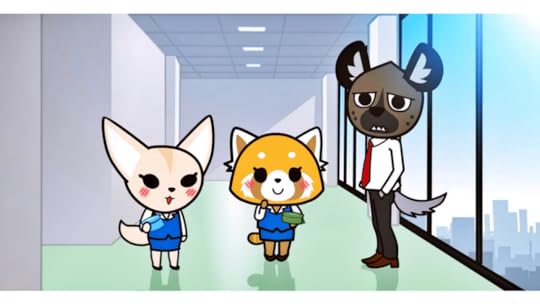
Estimated reading time: 4 minutes
I recently shared with you an article on how one-on-one meetings can increase employee retention and engagement. There’s another thing that one-on-one meetings can do – improve employee knowledge and skills. Learning opportunities can happen anywhere, including during one-on-one meetings.
However, for learning to be effective, it must be delivered properly. This is where learning often gets a bad rap. Simply telling someone something isn’t learning. At best, it’s a conversation. At worst, it’s a directive.
Organizations can give managers a learning model that allows them to deliver learning anytime to any size audience. Whether it’s via a one-on-one, pre-shift briefing, or department meeting, managers are empowered to transfer knowledge and skills. Here’s a 5-step model that anyone can use to conduct a learning conversation.
STEP 1: Introduction
The principles of adult learning tell us that adults respond to learning when they understand why the topic is important to them. The key word being “them”. Sometimes sharing the reason why the topic is important to the company will matter. But if you really want to get someone’s attention, tell them the WIIFM (What’s in it for me?)
This is also a good time to gain some understanding of how much the employee already knows about the learning topic. It’s possible they already have some basic information. Or maybe they know an outdated skill that will need some “unlearning” before the learning session can take place. Either way, it helps the manager to know what the employee does and doesn’t know before moving to the next step.
STEP 2: Discussion / Demonstration
During this step, the manager will explain the information that needs to be learned or they will show the other person how to do the task. Which one you do is determined by the content. And it’s important to know if the topic is knowledge or skill.
Knowledge topics are theoretical or practical understandings of a subject. For example, if we worked in a restaurant, knowledge topics would be the menu items. In a bank, it might be the different types of checking accounts that a customer can open.
Skill topics are proficiencies developed through experience. Using the same examples above, a skill topic would be the ability to cook the menu items or the processing of a new customer account.
STEP 3: Testing / Practice
It might be tempting, as soon as the information or demonstration is over to say, “Okay then, get to work!” It’s essential to give employees a chance to practice and get comfortable with the learning.
When conducting a knowledge learning session, the manager will want to ask questions of the employee to confirm they understand the information. It could be done verbally. For example, the manager might say, “Tell me how you would describe a patty melt to a guest.” Or “I’m a small business owner. What are my bank account options?”
For a skills learning session, the best way to confirm understanding is to have the other person demonstrate the task. The manager might ask the employee to make a patty melt or do a role play with a banking employee to set up a new account.
STEP 4: Feedback / Debrief
Again, once the practice is over, resist the urge to push an employee off to work. Take a moment to conduct a short debrief. According to Dr. Scott Tannenbaum, president of The Group for Organizational Effectiveness, teams that conduct debriefs perform an average of 20 percent better. Debriefs don’t have to be long or complex. I’m a fan of a two-question debrief, which can be very effective. Allow the employee to answer two questions:
· What did you do well?
· What would you do differently next time?
Emphasize to the employee that they need to answer the questions in this order. People might want to gravitate toward all the things that went wrong. Make them focus on what they did well. Then talk about what they would do differently. Once the employee has offered their own feedback, the manager can add any additional comments.
STEP 5: Wrap-up / Closing the Conversation
At this point, the manager has told the employee what’s in it for them, the information they need to learn, allowed them to practice, and provided feedback. They’ve conducted a complete learning activity. The only thing left is to answer any questions and set expectations for future performance.
Once the employee leaves the meeting, they should understand what is expected from a performance standpoint and what will happen if they do not implement the learning they received. They should also know where they can go if they encounter any questions or need additional information.
Managers Can Improve Employee Performance Through One-on-one Learning MeetingsEffective learning conversations do not always have to involve charismatic platform skills and a bunch of fancy props. It does involve teaching managers how to structure and deliver one-on-one learning conversations.
This is a perfect activity to include in the company’s management development or manager onboarding program. Managers can learn the 5-steps early in their careers, use them regularly, and refine their comfort level with learning delivery.
Image courtesy of Aggretsuko on Netflix
The post How to Conduct a Learning Session During a One-on-One Meeting appeared first on hr bartender.
May 16, 2023
Everything Organizations Should Know About the Work Opportunity Tax Credit (WOTC)

Estimated reading time: 7 minutes
(Editor’s Note: Today’s article is brought to you by our friends at ADP , a comprehensive global provider of cloud-based human capital management (HCM) solutions. You can stay up to date on HCM topics with the ADP Spark blog . Check it out when you have a chance. And enjoy the read.)
Just in case you missed it, the Internal Revenue Service (IRS) recently issued an update clarifying the prescreening process of new hires for the Work Opportunity Tax Credit (WOTC). First created by Congress in 1996, the WOTC is a federal tax credit available to employers who invest in American job seekers who have consistently faced barriers to employment. The targeted groups include qualified veterans, ex-felons, qualified Supplemental Nutrition Assistance Program (SNAP) benefit recipients, qualified Supplemental Security Income (SSI) recipients, and qualified long-term unemployed just to name a few.
With unemployment at record lows and organizations looking to keep recruiting costs in line, I thought this WOTC update might be a good time to refresh ourselves on what the WOTC offers. To help us understand the latest update, I reached out to Bonita Richardson, senior business consultant with ADP’s Tax Credit Services division. Bonita is a specialist in federal and state tax credit and incentives, specifically employment credits.
Bonita, thanks so much for being here. As it relates to the Work Opportunity Tax Credit (WOTC), how much of a tax credit can an organization receive?
[Richardson] Employers can receive a tax credit of up to $9,600 per qualified new hire, which is equal to 40% of the new hire’s qualified wages, provided the new hire works at least 400 hours during their first year of employment. Eligible employees must work a minimum of 120 hours to qualify. Employees working more than 120 but less than 400 are eligible for a credit of 25%. Rehires are not eligible for the tax credit.
More than $1B in tax credits are claimed each year under the WOTC program. The credit is limited to the amount of business income tax liability or Social Security tax the employer owes.
That’s a lot of money for employers. Now that we’re caught up with what the WOTC is and how it works, what changed with this recent IRS update?
[Richardson] The WOTC program requires that applicants are pre-screened on or before the date of the initial job offer. Prescreening is not a new rule but rather the IRS is calling out that the WOTC process has always had prescreening as a requirement. For the IRS to take the time to issue such an update, it signals that they are aware that there are companies screening out of compliance, and it would further imply that this is an area they will audit to ensure compliance.
Some organizations might tell you that screening applicants post hire allows for the client to collect the WOTC credit faster. Under the current IRS guidance, not prescreening places an organization out of compliance.
That brings up a question. If an organization hasn’t been applying for the WOTC tax credit, does this mean there’s no way to go back and screen those new hires?

[Richardson] That’s correct. The WOTC is a proactive hiring credit and is only available for new employees. That’s because the intent of the program is to provide an employer with some idea that the applicant fits into a WOTC target group before a job offer is made. This way the employer partners with Department of Labor (USDOL) and other areas of government in their goal to help individuals that may have barriers to employment, like long term government assistance recipients or those re-entering the civilian workforce after military service to get back into gainful employment.
For example, let’s say two individuals apply for the same job and they’re both equally qualified to do the job. One of the applicants is WOTC eligible and the other applicant is not. With all other things being equal, the USDOL encourages the employer to hire the WOTC eligible applicant. By doing so, they’ll not only gain a good employee, they’ll also potentially help that individual get off government assistance and back into a working part of society. More importantly to the IRS, that individual will get back into paying taxes. The government provides an incentive for this partnership in the form of a credit against the company’s federal tax liability.
Additionally, with the way the target groups are created, existing employees likely wouldn’t qualify for the tax credit anyway.
Do you know what happens if an organization has been screening post-hire? Does that mean they’re no longer eligible for the tax credit?
[Richardson] There is a risk that WOTC credits could be overturned upon audit if the IRS discovers that screening is taking place outside of program guidelines. If an organization is screening out of compliance (i.e., after the date of a job offer) for one of their hires, that likely means they are out of compliance with 100% of their WOTC screens. Meaning, 100% of the credit they have received could be revoked.
Some candidates might be concerned about disclosing whether they’re a part of a targeted group. How can organizations encourage candidates to complete the questionnaire?
[Richardson] It has been my experience that most applicants are willing to participate in the WOTC program. Remember, the program has been in place for more than 25 years with most major employers participating in WOTC screening so asking the screening questions isn’t anything new. Introducing WOTC screening that gives a brief description of the program and encourages the applicant to complete the screening without fear of discrimination for their responses is also very helpful.
Last question. Organizations will want to make sure that the WOTC survey is conducted at the right time in their recruiting process. Ideally, when should organizations conduct the pre-screening?
[Richardson] For most employers the best place to screen for WOTC is when the applicant completes the initial application. This placement captures the screening question responses up-front removing any doubt of program compliance. Look for a place within the application process where inserting WOTC can be transparent to the overall gathering of information. Additionally, be sure the screening process is consistent for all applicants. If possible, don’t try to create separate processes for different parts of the organization as this can confuse the process and create holes in compliance.
Some companies choose to couple WOTC screening at the time the initial job offer is extended but this timing can introduce a risk to compliance. If the applicant waits even one day after receiving the job offer to complete the screening, it becomes invalid, and the credit could be denied.
The WOTC screening should never be coupled with onboarding or Form I-9 compliance since these activities most often take place after the individual has started work making the screening untimely.
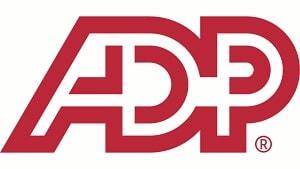
I want to extend a huge thanks to Bonita for sharing her knowledge with us. If you want to learn more about the Work Opportunity Tax Credit, ADP has a WOTC resource center you can explore. It includes a compliance overview, and a couple of ebooks on the recent IRS update as well as a guide to “Making Employee Screening Simpler”. Definitely worth checking out.
The purpose of today’s article is two-fold: 1) If you weren’t aware of the recent IRS update regarding the WOTC, now you know. And you’ll want to be sure you’re in compliance. And 2) If you weren’t aware that the WOTC existed (or had forgotten about it), this is a good time to get reacquainted. The Work Opportunity Tax Credit can help talented people get jobs and provide organizations a tax credit for doing it.
The post Everything Organizations Should Know About the Work Opportunity Tax Credit (WOTC) appeared first on hr bartender.
May 14, 2023
Quitting Is Not a Sign of Failure – HR Bartender

Estimated reading time: 3 minutes
Harvard Business Review recently published an article titled “Should You Quit Your Job?” with advice on how to decide if it’s time to start looking for a new opportunity. It’s a good read – regardless of your current work situation.
It reminded me of a reader note that I answered a couple of years ago about “How Much Frustration Can You Deal With?” I’d like to think we all realize there are parts of our work that we love and other parts that …well, we tolerate. And that’s okay. I must admit that sometimes I’ve learned just as much if not more from some of the more frustrating tasks I’ve had to do in my career. Even in my personal life, but we’ll save those stories for another day. LOL!
Being able to balance the good with the frustration is the reason I wanted to talk about quitting today. One of the things that the HBR article mentioned is something really important. They talked about how quitting should not be framed as failure. Whether you quit a job, a hobby, etc., quitting is okay if it’s done for the right reasons and at the right time. For example, we really should quit doing things that are unsafe.
When you’re thinking about quitting something, ask yourself some questions:
Am I considering walking away too soon? Sometimes we might be tempted at the first sign of difficulty to toss in the towel. If we quit too soon, is it possible that we might miss out on a tough, frustrating, challenging but incredibly valuable learning experience that we wouldn’t have learned any other way?
Is it too late? Yes, there is such a thing as quitting too late. Maybe we keep hoping a change will occur, so we stick around. Meanwhile, everyone else has seen the writing on the wall and made other plans.
Are we concerned what others will think and we don’t quit at all? Unfortunately, there are times when we might feel some peer pressure and stay in bad situations because we don’t want to be considered “disloyal” and don’t want to be called a “quitter”. Sometimes this works and sometimes we get hurt in the process.
I wish I could say these are easy questions to answer. You’ve probably figured out that they’re not. They involve a tremendous amount of self-awareness and honesty. And coming to the answer of “yes, I need to quit” and being able to do it are sometimes, two different things. There could be internal or external factors that impact our ability to act right away.
In the case of changing jobs, maybe we should take a class to make ourselves more marketable as a candidate. Or maybe we need to save some money so we can comfortably take some time off. Hopefully, once we recognize that we need to quit something then we can start putting plans in place to make it happen.
There are lots of “inspirational” quotes and sayings that want us to believe that quitting is bad or wrong or a sign of failure. It’s not. Sometimes quitting is the absolutely right thing to do. Ideally, it’s good to quit with a plan, so we can learn from the experience. That’s why quitting isn’t a sign of failure. Because we learned something along the way.
Image captured by Sharlyn Lauby while exploring the streets of San Francisco, CA
The post Quitting Is Not a Sign of Failure – HR Bartender appeared first on hr bartender.
May 11, 2023
Keep Your LinkedIn Profile Current
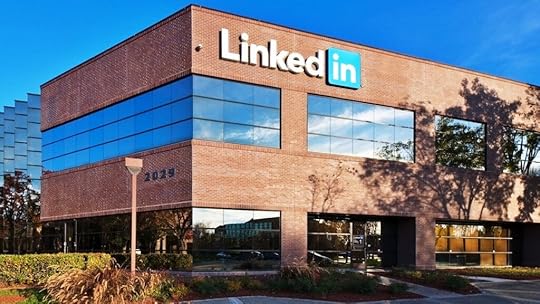
Estimated reading time: 2 minutes
LinkedIn is a professional network with more than 900 million members in more than 200 countries and territories worldwide. I’d like to think that everyone knows LinkedIn is an important platform to be on and communicate with other professionals.
But did you know how important it is to keep your profile current?
Old photos, outdated professional information, and a lack of engagement can keep others from connecting and interacting with you on LinkedIn. And we want people to interact with us. LinkedIn is a way to tell people what’s going on in our career. We can follow business leaders and subscribe to industry newsletters via LinkedIn. Oh, and don’t forget with a library card, you might get free access to LinkedIn learning!
The reason I wanted to send out a reminder about LinkedIn is because I recently discovered a resource that might help you refresh your profile. It’s called “LinkedIn 101: How to Write and Effective LinkedIn Profile & Business Page”. The book is a short read (138 pages) and it’s focused on delivering step-by-step instructions on how to build and maintain a LinkedIn profile that will help you build your brand, find a job, or identify potential clients. I could see “LinkedIn 101” being something I refer to regularly to keep my profile refreshed.
If you’re looking for a non-book resource, don’t forget about online publications like
Chameleon Resumes – Free Tools
Erin Kennedy, Professional Resume Services
Regardless of your opinions about social media, it’s still a part of our personal and professional lives. And when it comes to business, LinkedIn is still tops. That means managing your profile matters. There are lots of resources to help us create and maintain a positive social media presence. Find the ones that work for you and use them. You’ll be glad you did!
Image courtesy of Wikipedia
The post Keep Your LinkedIn Profile Current appeared first on hr bartender.
May 9, 2023
Servant Leadership: Excellent Leaders Focus on People and Profits
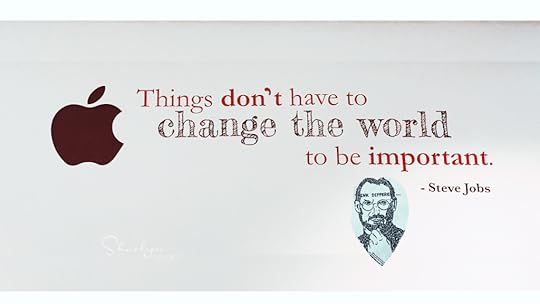
Estimated reading time: 4 minutes
Organizations are very focused on financial success right now. Well, actually, organizations have always been focused on financial success. It’s just with economic uncertainty, it becomes even more apparent. But organizations should be equally focused on the people side of the business. Because it’s the organization’s people that will bring profits.
It reminded me of an interview that I did with Dr. Ken Blanchard and Randy Conley after the release of their book, “Simple Truths of Leadership: 52 Ways to Be a Servant Leader and Build Trust”. I first learned about the concept of Servant Leadership during a program I participated in years ago called Leadership Broward. The program was designed to encourage business leaders to become active community stewards. One of the concepts shared during the program was servant leadership.
If you’re not familiar with the concept of servant leadership, here’s a little history. Servant leadership was started in the 1970’s by Robert Greenleaf, director of management research at AT&T. Greenleaf’s job was to study how the best leaders emerged in organizations. During the same time, Greenleaf was personally troubled by the student unrest on college and university campuses.
So, Greenleaf decided the best way to understand the youth movement was to read a novel that was very popular with youth at the time. The novel was “Journey to the East” by Hermann Hesse. SPOILER ALERT: “Journey to the East” is about a group of people traveling to a new land. Accompanying the group is their servant, Leo, who takes care of their stuff and sings songs of encouragement. During the trip, Leo disappears. The group struggles to stay together and eventually disbands. Several years later, the group realizes that Leo – the group’s servant – was really their leader.
Inspired by Leo’s character, Greenleaf realizes the key to leadership lies in “serving” (aka focusing on the people you manage) and writes what’s considered to be his most famous essay, “The Servant as Leader”, which outlines ten basic competencies associated with servant leadership. I’ve highlighted a few of them below.
Awareness. Self-awareness of our strengths and weaknesses is necessary. Leaders must open the doors of perception and see what’s inside. This can be scary, but it’s necessary to provide reality and see things in proper perspective.Listening. Other leadership experts have written about the importance of listening. A leader responds to a problem by listening first. We have to move past the stereotype that leaders have all the answers. The reality is that leaders need to be open to admitting that they don’t.Empathy. Empathy is easy to say but in practice, is really hard. Leaders not only identify with others but accept them for who they are. Great leaders seek to understand differences.Commitment to developing people. Excellent leaders help others become good leaders. You’ve heard me say before that a manager’s job is to hire and train their replacement. This directly ties to that. Good leaders aren’t threatened by others and make time to help the people in their team grow.Foresight. Greenleaf says that leaders can sense the future. It’s what gives leaders their “lead.” I like to think of this as leaders must use good decision-making skills. And we should remember that a lack of decision making can be perceived as an ethical failure.Conceptualization. Leaders articulate a clear vision with passion, which engages and energizes the rest of the team. While I’m not sure that we always have a clear vision of the future, I do believe we can do a good job of communicating our passion and intent.I’ll admit that Greenleaf’s writings have received some criticism over time. But in reading his words, I find it amazing that decades later, many (if not all) of the characteristics are still associated with leadership. These competencies may not be called by the same name, but the traits are similar.
It’s a reminder that’s there is no clear path to being a good leader. If there was, we’d all have an index card with the steps to be a good leader and the conversation would be over. Leadership takes time and practice. But if there was one thing we could all focus on to improve our leadership skills, maybe first serving the people around us is a good place to start.
Image captured by Sharlyn Lauby while exploring the streets of New York, NY
The post Servant Leadership: Excellent Leaders Focus on People and Profits appeared first on hr bartender.
Sharlyn J. Lauby's Blog
- Sharlyn J. Lauby's profile
- 10 followers



